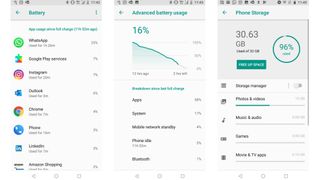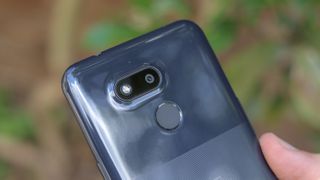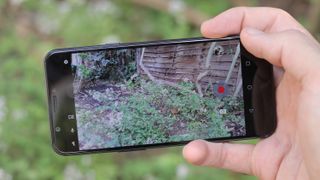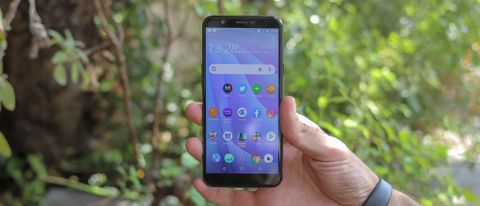Why you can trust TechRadar
Battery life
- 3,075mAh battery
- Poor battery performance
- Power saving modes in settings
While the HTC Desire 12s may be off to a good start, battery life is the first area it drops the ball. We usually find with most mid-range and lower phones, battery life is that bit better than flagships as they have less demanding hardware draining the battery dry.
In turn, with its very entry-level Qualcomm Snapdragon 435 chipset and 3,075mAh battery, anything short of a full day would have been a massive disappointment.
The reality wasn’t great; a 6am start left us with 16% juice left in the tank by 17:45, meaning you can expect little more than 13-14 hours of regular use from the phone.

We ran our 90 minute, full HD video test on the handset, with screen brightness on full and accounts syncing over WiFi in the background. The HTC Desire 12s dropped 19%, ending up on 81% after the video. This isn't a terrible result, and we've certainly seen worse, but it's still on the poorer performance side.
There are power saving features within the settings, which you can turn on automatically or manually, but unless you’re a very light user who gets the HTC Desire 12s for a really great price, its battery performance alone could be enough of a strike against it to dissuade you from picking one up.
Camera
- 13MP lenses on both front and back
- Disappointing overall performance
- Reasonable HDR mode
The Desire 12s camera setup consists of two 13MP cameras, one on the front and one at the back. These feature apertures of f/2.2 and f/2.0 respectively and both sport LED flashes.
Shooting modes include Auto, Sports, Landscape and Panorama. You can toggle HDR on or off, but there’s no auto-HDR feature. As for shooting resolutions, it captures 4:3 photos at up to 13MP, and video at up to Full HD.
Performance from the main camera isn’t bad if you can hold your hand still enough, your subject doesn’t move, and the lighting is excellent. If any of those variables fail to align, things go downhill, and you can expect a soft shot with middling detail.

Once you take your shot, there’s a noticeable period of processing time, and pinching and zooming around your picture also results in noticeable amounts of stutter.
In low light, noise creeps in very readily, which is what we’d expect from any device that costs what the HTC Desire 12s does. That said, it doesn’t compete with the best camera phones in its class like the Honor 20 Lite and Realme 3 Pro, which have dedicated night modes.
It isn’t all bad; fire up the HDR feature, which thankfully works across both the front and rear cameras, and in almost every condition we threw at the phone, it produced better-looking pictures, though this isn’t enough to make the camera competitive at the phone’s price.

The one caveat is in scenes with a lot of dark colors - the HDR effect can look very pronounced, as illustrated in the image of the black cat, below.
Video, which is recorded at a maximum resolution of Full HD at 30fps, or 720p at 60fps, looks okay.
There aren’t additional video modes like slow motion, and without image stabilization it doesn’t cope too well with hand shake, however, detail captured is fair and if you can get the phone on a surface or a tripod in good light, you can get some decent-looking footage.
Camera samples








Current page: Battery life and camera
Prev Page Introduction, design and display Next Page Anything else I should know?Basil Kronfli is the Head of content at Make Honey and freelance technology journalist. He is an experienced writer and producer and is skilled in video production, and runs the technology YouTube channel TechEdit.

